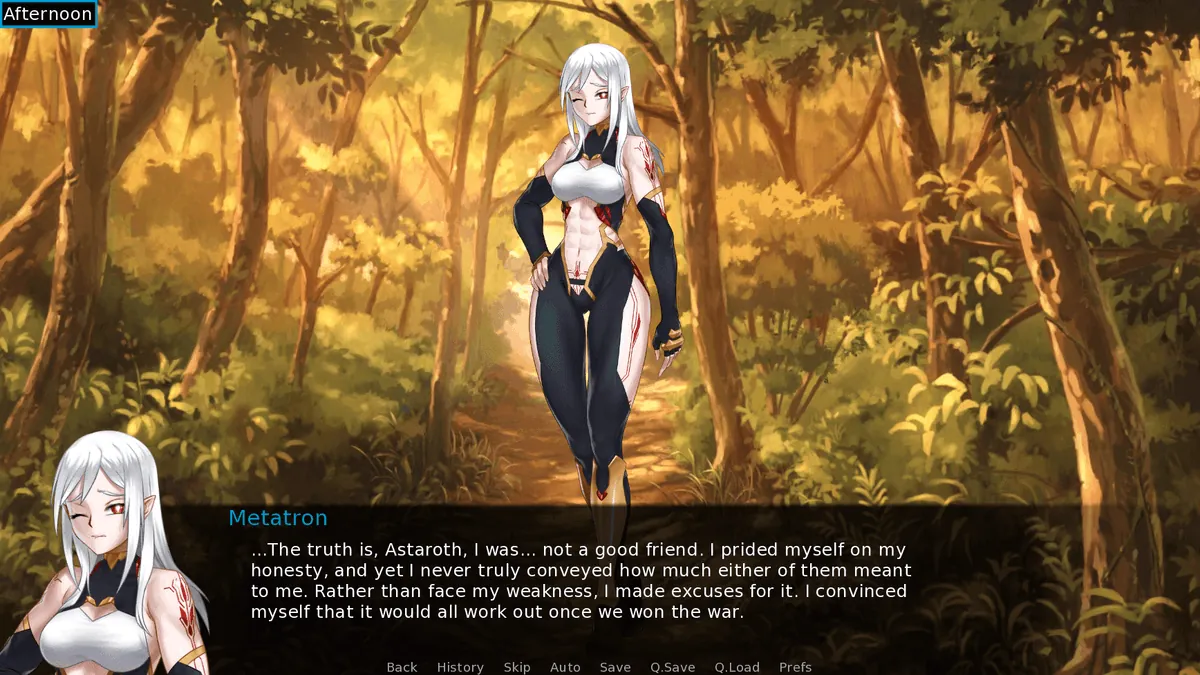
Only a Dream
Play Only a Dream
Only a Dream review
Explore gameplay mechanics, storyline, and features of this indie visual novel experience
Only a Dream stands out as a unique entry in the indie visual novel landscape, combining narrative depth with interactive storytelling elements. This guide explores what makes this title distinctive, from its artistic approach to character development and immersive gameplay mechanics. Whether you’re curious about the game’s design philosophy, story structure, or technical implementation, this comprehensive overview covers everything you need to know about experiencing Only a Dream. We’ll examine the core features that define this title and what players can expect from their journey through its dreamlike world.
Understanding Only a Dream: Game Overview and Core Mechanics
What Makes Only a Dream Unique in the Visual Novel Genre
Let me tell you about the first time I booted up Only a Dream visual novel. I’d been playing visual novels for years, from the classic Japanese epics to quirky Western indie darlings, and I thought I’d seen it all. I expected another charming but predictable story. I was so wrong. 🎭 Within the first hour, I realized this wasn’t just another entry in the genre; it was a deliberate and beautiful subversion of it. What sets this interactive storytelling game apart isn’t one single gimmick, but a deeply woven philosophy that places artistic game design and raw, human connection at its very core.
While many games in this category rely on established tropes—the tsundere love interest, the predictable branching paths—Only a Dream carves its own path. Its uniqueness stems from a commitment to psychological realism and a dreamlike, almost ethereal atmosphere that permeates every pixel and line of dialogue. It’s less about choosing a romantic partner from a lineup and more about navigating the fragile, often confusing landscape of your own subconscious and the characters you meet there. The character-driven narrative is so potent that you stop thinking of them as “characters” and more as people you’ve genuinely come to know.
The game’s indie game mechanics are a breath of fresh air. Instead of a simple affection point system, your choices influence the protagonist’s mental state, the story’s thematic weight, and the very perception of reality within the game’s world. It’s a visual novel gameplay experience that trusts you with ambiguity and rewards introspection over simply trying to “get the good ending.”
To give you a clearer picture of how Only a Dream stands out, here’s a breakdown of its key features compared to more conventional titles in the genre:
| Feature | Only a Dream | Traditional Visual Novels |
|---|---|---|
| Narrative Focus | Internal conflict, psychological depth, and atmospheric exploration | External plot events and romantic conquest |
| Choice System | Choices affect narrative tone, character perception, and metaphysical story elements | Choices typically raise/lower visible “affection” meters for specific characters |
| Pacing | Deliberately slow, contemplative, and mood-driven | Often faster-paced, driven by clear plot milestones and “flag” events |
| Artistic Goal | Create a cohesive, immersive dreamscape where art and narrative are inseparable | Provide attractive character sprites and backgrounds to illustrate a story |
This focus on a cohesive experience is what truly defines the Only a Dream game features. It’s not trying to be everything to everyone. It knows its strengths—atmosphere, psychological insight, and artistic integrity—and it leans into them with breathtaking confidence. If you’re looking for a game that feels like a personal journey rather than a checklist of events, you’ve found it. ✨
Gameplay Mechanics and Interactive Elements
Alright, let’s get into the nuts and bolts of how you actually play this thing. The core visual novel gameplay in Only a Dream will feel familiar at a glance—you read text, and you make choices. But to leave it at that would be a massive disservice. The genius of this interactive storytelling game lies in how it layers its systems to create a deeply personal and reactive experience. Your decisions don’t just change the destination; they change the very nature of the journey itself.
The most prominent of the Only a Dream game features is the Subconscious Influence System. 🧠 This isn’t a visible meter you can min-max. Instead, your choices subtly shift the protagonist’s outlook. Are you cynical or hopeful? Do you confront painful memories or shy away from them? The game remembers, and the narrative voice, the dialogue options available to you, and even the visual filters can change based on your accumulated psychological state. I remember replaying a chapter after making entirely different emotional choices, and it felt like I was experiencing a parallel dimension of the same story—the events were similar, but the emotional color was completely different.
Let’s look at a concrete example of how your agency shapes the story:
Example: The Park Bench Conversation
Early on, you have a crucial conversation with a key character on a park bench. The dialogue choices aren’t simply “Agree” or “Disagree.”
– Option A: “Some memories are better left buried.” (Increases Resigned trait)
– Option B: “Facing the past is the only way forward.” (Increases Determined trait)
– Option C: “I’m not sure what’s real anymore.” (Increases Confused trait)
Choosing A might lead to a more melancholic, introspective scene where the character shares their own fears of forgetting. Choosing B could unlock a previously inaccessible branch where you both decide to actively investigate a mystery. Choosing C might trigger a surreal, dream-like sequence that night, offering symbolic clues you wouldn’t have seen otherwise. This is the heart of the indie game mechanics at play—your role is not to solve a puzzle, but to define a perspective.
Beyond dialogue, the game incorporates environmental interaction in a way that enhances the character-driven narrative. 🔍 Clicking on certain objects in a scene won’t just give you a generic description. It might trigger an internal monologue that reveals backstory, alter your relationship with a character based on what you choose to focus on, or even change the background music to reflect a shift in mood. It makes the act of exploring every scene feel meaningful and woven into the narrative fabric, rather than just a task for completionists.
The pacing is deliberately contemplative. This isn’t a game you rush through. The visual novel gameplay is designed to make you sit with your choices, to feel their weight. The user interface is clean and unobtrusive, with excellent accessibility features like a comprehensive log, adjustable text speed, and auto-read mode, ensuring that the focus remains squarely on the story and your place within it.
Visual Presentation and Artistic Direction
If the gameplay is the heart of Only a Dream, then its visual presentation is the soul. From the moment you start the game, you’re immersed in an artistic game design that is nothing short of breathtaking. This isn’t just about having “pretty pictures”; it’s about using visual language as a fundamental storytelling tool. The art style is a beautiful, hand-painted watercolor aesthetic that bleeds and blends at the edges, perfectly capturing the ethereal, half-remembered feeling of a dream. 🎨
The character design is equally masterful. These aren’t characters designed to be pin-ups; they are designed to be believable within this dreamscape. Their expressions are subtle, their movements are gentle, and their designs reflect their inner worlds. I was particularly struck by how a character’s appearance could subtly shift based on the protagonist’s perception of them—a visual representation of the character-driven narrative. In one playthrough, a character might appear warm and inviting, while in another, shrouded in shadow and mystery, all based on my previous choices and the protagonist’s state of mind.
The technical implementation of these visuals is superb. The game uses dynamic lighting and filter effects to a powerful degree. A happy memory might be bathed in a warm, golden glow, while a moment of anxiety might be accompanied by a desaturated palette and a slight screen distortion. These aren’t just cosmetic touches; they are integral to the interactive storytelling game experience, directly tying the artistic game design to your emotional journey through the story.
Pro Tip: Pay close attention to the background details in every scene. The artists have hidden symbolic elements and recurring motifs that provide deeper insight into the story’s themes and the protagonist’s subconscious. It’s like a visual easter egg hunt that enriches the entire experience! 👁️
Animation is used sparingly but effectively. Instead of fully animated sprites, you get subtle movements—a character tucking their hair behind their ear, a slow blink, a shift in posture. This restraint makes every movement feel significant and realistic, enhancing the immersion without breaking the contemplative pace. The Only a Dream visual novel understands that sometimes, less is more, and the power of a single, well-executed animation can be far greater than constant motion.
The overall atmosphere crafted by this cohesive visual presentation is one of melancholy beauty and profound mystery. The Only a Dream game features a union of form and function where the art is not in service to the story—it is the story. It’s a world you don’t just observe, but one you feel. You feel the chill of the forgotten spaces, the warmth of a genuine connection, and the unsettling blur between reality and dreams. This commitment to a total sensory and emotional package is what makes this visual novel gameplay so memorable and proves that the indie game mechanics scene is where some of the most innovative and heartfelt artistic game design is happening today. 🌌
Only a Dream represents a thoughtful entry in the visual novel genre, offering players a compelling blend of interactive storytelling and artistic presentation. Through its unique mechanics, character-driven narrative, and multiple branching paths, the game creates an experience that rewards engagement and exploration. The combination of meaningful choices, emotional depth, and replay value makes it a title worth experiencing for fans of narrative-focused games. Whether you’re drawn to the artistic direction, the complex character relationships, or the branching storyline, Only a Dream delivers a memorable journey that lingers long after completion. For those considering diving into this world, approaching it with an open mind and willingness to explore different choices will unlock the full richness of what the game has to offer.




















